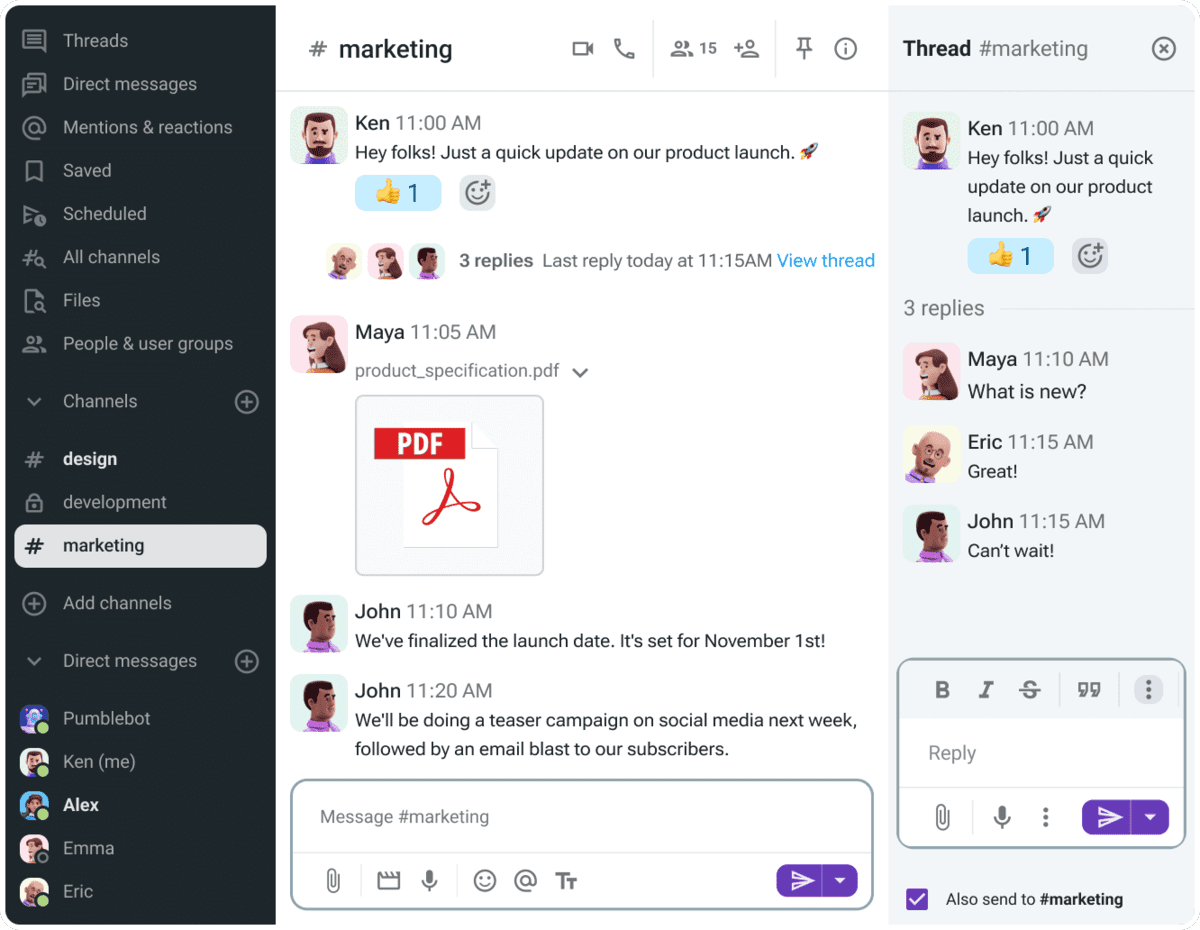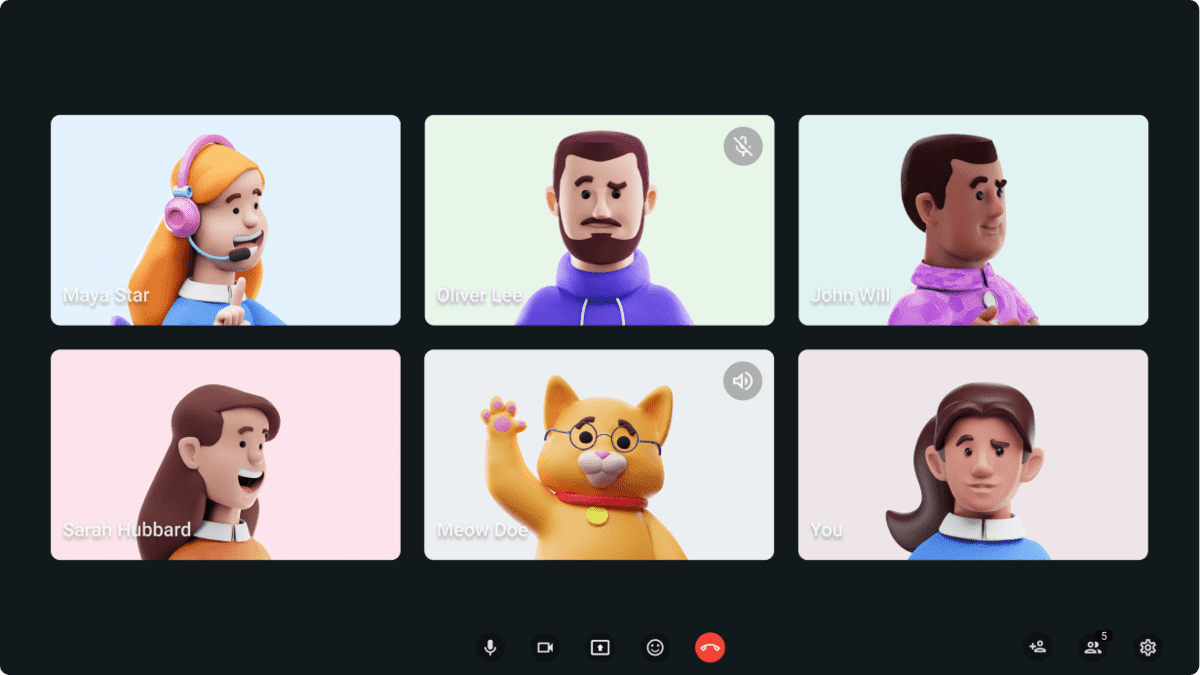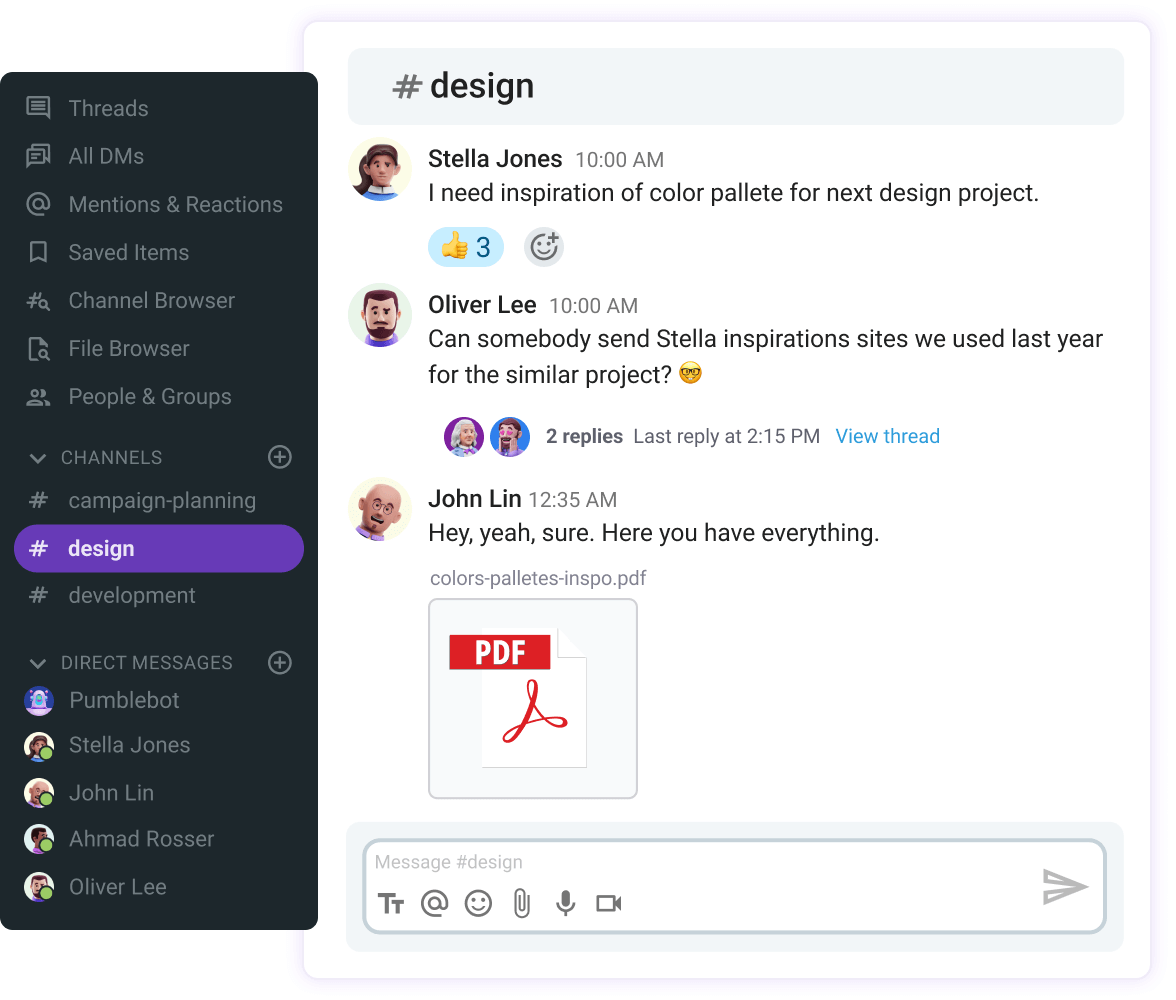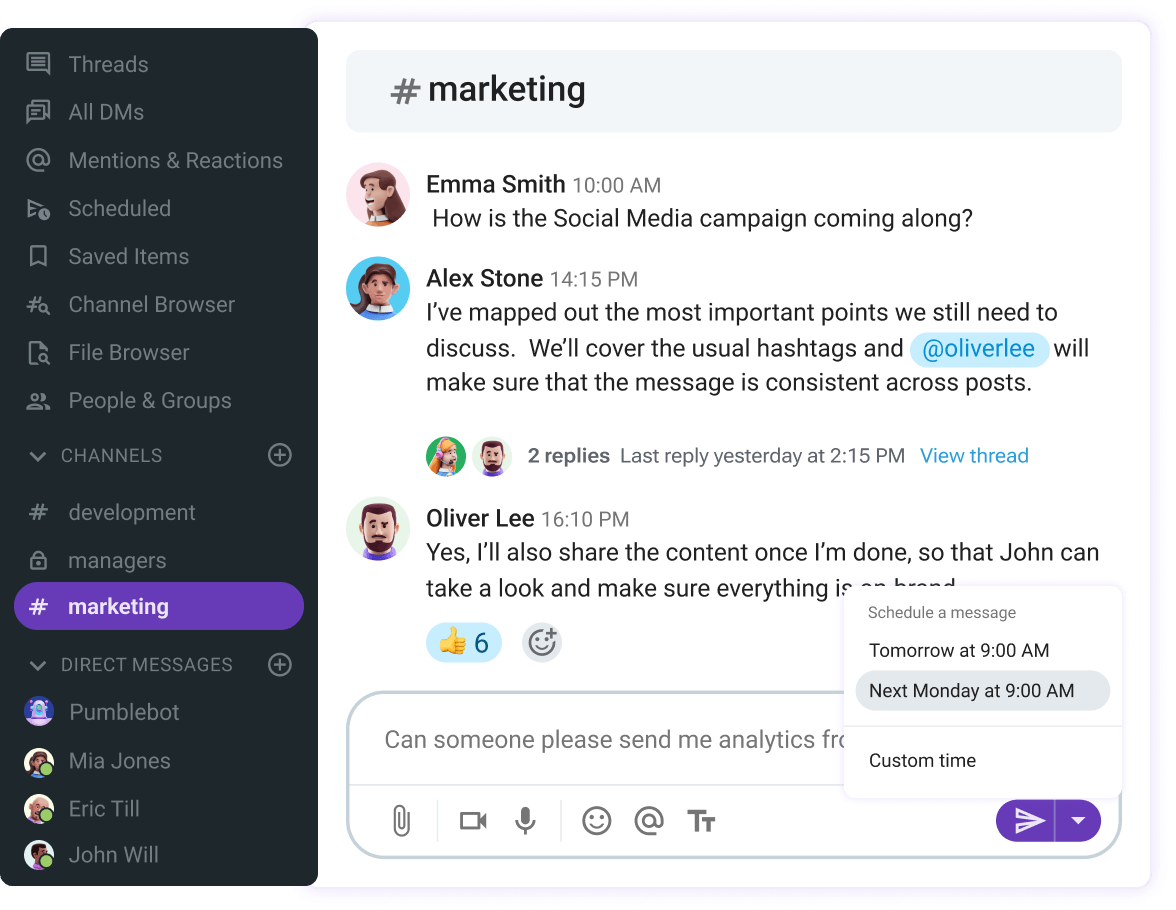Do you know how to get your team to:
- Communicate more effectively,
- Build stronger relationships with coworkers and clients, and
- Boost overall teamwork?
The answer is — organize communication training. By equipping your team with the skills to communicate better, you’re laying the groundwork for smoother collaboration and happier clients.
Communication is the backbone of any successful workplace, from managing day-to-day tasks to building strong client relationships. Even if your team is already good at interacting, there’s always room to strengthen communication skills — for their growth and your company’s success.
This training can cover a range of skills, like active listening, empathy, and conflict resolution.
Typically, it’s divided into communication types such as:
- Verbal communication,
- Non-verbal communication,
- Written communication,
- Interpersonal communication, and more.
Whether you’re gearing up for a big project or simply want to enhance team communication, it’s always the right time for communication training.
Here are the top 5 tips to keep in mind to make your communication training a success.

Table of Contents
#1: Create inclusive and targeted training
Everyone should be included in communication training, regardless of their role or department. At a minimum, each person participates in daily internal communication, which forms the foundation of open and transparent interactions.
Beyond internal communication, you should create programs tailored to specific groups, like customer service reps or salespeople, or for employees facing specific communication challenges, such as shyness or managing difficult conversations.
When planning your training, examine how your team currently communicates and any obstacles they may be facing. This lets you shape the training around the areas most in need of improvement or new skills.
It’s also helpful to create spaces in your internal communication app where employees can practice and discuss communication skills outside formal training sessions. For example, setting up dedicated channels can give employees a place to find training resources, ask questions, and share insights.

These channels encourage employees to develop stronger communication skills daily by providing a dedicated space for ongoing questions and feedback.
#2: Encourage hands-on practice
Rather than simply presenting communication training, encourage your employees to actively practice what they’ve learned to ensure they understand it and can apply it in their daily interactions.
If your team is remote or hybrid, host your training sessions through video conferencing, creating real-time practice opportunities that reinforce learning.
You can share your screen to present material and encourage teammates to raise their hands and join discussions — promoting collaboration and a deeper understanding of the content.
Including live exercises or practice sessions can also be a great way to engage your team.

Consider recording your meetings so teammates can revisit the material later, and share related files like handbooks and practice tests to support self-paced learning. This way, the training continues long after the initial session is over.

#3: Gather and act on feedback
Regularly check in with your team and gather feedback to ensure your communication training is well-received and effective. This will help you tailor future training to team needs and secure the desired results.
There are a few ways to go about gathering feedback. For example, you can use direct messaging in your team communication app to follow up with individuals and address any questions or concerns. Personal, one-on-one feedback can provide deeper insights into specific areas for improvement.
Anonymous questionnaires are another great option, allowing your team members to give honest input about what’s working and what could be improved.
After a training session, pose a few questions or start a discussion in your dedicated channels to gather opinions. Encourage your team to contribute in threaded conversations so all feedback stays organized and easy to review when planning your next communication training session.
Share feedback effortlessly on Pumble
#4: Measure results
After each communication training program, it’s essential to measure its impact.
Beyond gathering feedback, look at specific metrics like:
- Job performance,
- Customer satisfaction, and
- Team morale.
If these areas show improvement, it’s a good sign the training was effective.
Another useful approach is to conduct post-training tests to see how well employees absorbed the material. These assessments reveal what team members have learned and highlight areas that might need more focus.
Keep an eye on team communication over time, as well. If you notice that skills aren’t being applied, consider adjusting your program to reinforce certain skills or introduce new topics.
By regularly evaluating the outcomes, you ensure your training continually benefits your team, teaching them to communicate confidently and effectively with each other and customers.
#5: Keep it consistent
As we’ve established, effective communication training is essential for both team cohesion and your company’s growth.
But it’s important to remember that it isn’t a one-time event – it should be a consistent part of your company culture to have a lasting impact.
To achieve a consistent program, break the material down into multiple parts and span it out over a longer period, so it’s not overwhelming for your team.
Also, avoid initiating training sessions only when mistakes happen; instead, make them a regular part of your workplace learning to continuously improve team interactions.
In your workplace communication app, try scheduling messages to remind your team about upcoming training sessions or to share weekly communication tips. This helps lighten your training responsibilities and keeps communication skills top-of-mind.

Additionally, recording training meetings helps create a library of resources, making it easy for new hires to catch up and makes consistent training much easier to manage.
Enhance your communication training with Pumble
Whether you’re tackling internal challenges, improving customer connections, or simply navigating daily interactions, effective communication is an invaluable skill for your team.
Making communication training a priority can advance your team’s capabilities and bring lasting success to your company.
Instead of overlooking workplace communication, equip your team with tools that support your training goals.
With Pumble, you have everything you need to make communication training a success — all the tools we’ve covered and then some!
It’s a reliable solution that simplifies training with features like:
- High-quality video and audio,
- Screen sharing, and
- Channels for group discussions.
Pumble makes it easier to put communication strategies into practice, ensuring that effective, clear communication becomes second nature for your team.
Ready to elevate your team’s communication? Try Pumble today and watch your communication training thrive!






